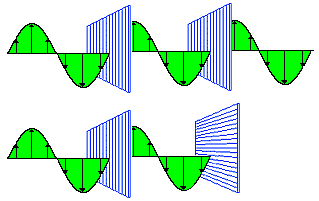

In classical physics, polarization is a phenomenon peculiar to transverse waves. Light and other electromagnetic waves are transverse waves made up of mutually perpendicular, fluctuating electric and magnetic fields. In the diagram below an EM wave is propagating in the x-direction, the electric field oscillates in the xy plane, and the magnetic field oscillates in the xz plane. A line traces out the electric field vector as the wave propagates.

An unpolarized electromagnetic wave traveling in the x-direction is a superposition of many waves. For each of these waves the electric field vector is perpendicular to the x-axis, but the angle it makes with the y-axis is different for different waves. For a polarized electromagnetic wave traveling in the x-direction, the angle the electric field makes with the y-axis is unique. A polarizer is a material that passes only EM waves for which the electric field vector is confined to a single plane that contains the direction of motion.
An ideal polarizer passes the components of the electric field vectors that are parallel to its transmission axis. If E0 is the incident field vector and the angle between E0 and the transmission axis is θ, then the magnitude of transmitted field vector is E0cosθ and its direction is the direction of the transmission axis. The irradiance (intensity) I of an electromagnetic wave is proportional to the square of the magnitude of the electric field vector. We therefore have
Itransmitted = I0cos2θ.
If θ = 90o the transmitted intensity is zero.
